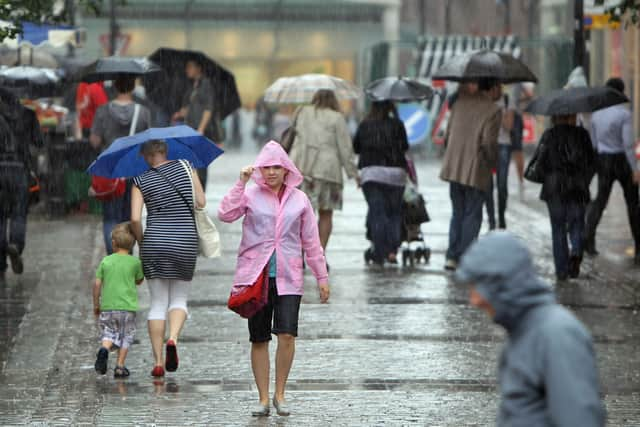Bonfire Night 2022: Met Office weather forecast for London fireworks displays and events
and live on Freeview channel 276
With Halloween now out of the way, people’s attention has quickly turned to the next big day on the calendar. This weekend marks Bonfire Night, with hundreds of events and firework displays taking place up and down the country.
Bonfire Night falls on a Saturday this year and a bumper crowd is expected at events in and around the Capital. One of the key things to look out for on Bonfire Night is the weather.
Advertisement
Hide AdAdvertisement
Hide AdNovember is traditionally a bleak month in the UK, usually a month full of clouds and rain, which can potentially scupper Bonfire Night plans. Despite this, the current Met Officeweather forecast for Greater London on Bonfire Night is showing a mild day, with some light rain expected in the evening.
The Met Office says that the rain should fall at around 6pm, but will ease up as we head further into the night. The rain is described as ‘light’ which shouldn’t put a halt to any firework displays or other events taking place across the city.
Sunset on Saturday, 5 November is at 4:27pm. Here’s the Met Office weather forecast for the days leading up to and including Bonfire Night.
Met Office weather forecast for Greater London
Thursday, November 3
Mostly cloudy with rain likely becoming widespread again through the early morning, this heavy at times. Drier and brighter conditions slowly spreading eastwards during the afternoon. Light winds. Maximum temperature 13 °C.
Friday November 4, Bonfire Night and Sunday November 5
Advertisement
Hide AdAdvertisement
Hide AdBright, rather breezy on Friday with isolated showers. Cloudier Saturday with rain later. Risk of fog Sunday morning, then a mix of sunny spells and showers. Temperatures near normal.
What are the origins of Bonfire Night?


Back in 1605, Guy Fawkes was part of a gunpowder plot. He wanted to blow up King James I and his government. Fawkes, along with others who wanted England to become Catholic, put 36 barrels of gunpowder in cellars underneath the Houses of Parliament in London, ready to set off a massive explosion.
However, the plan failed as one of Fawkes’ members sent a letter to someone in parliament telling him to stay away on November 5, with the letter making its way to the king and his plan was foiled.
Fawkes and his other conspirators were tried for high treason Westminster Hall on 27 January 1606 and all were convicted and sentenced to death. Their executions took place on 30 and 31 January.
Comment Guidelines
National World encourages reader discussion on our stories. User feedback, insights and back-and-forth exchanges add a rich layer of context to reporting. Please review our Community Guidelines before commenting.
